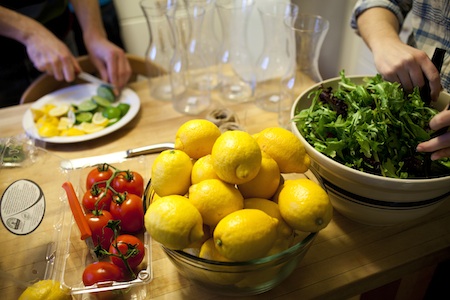SAGE Advice: January 2012 Archives
 Wondering which fresh fruits and veggies are available when winter strikes and snow covers the ground? The frigid months may make it seem like produce can’t be cultivated, however, there are numerous seasonal options to choose from during the winter months. While the seasonal fruits and vegetables in Illinois and the Midwest are limited during the months of December, January and February, there are regions that grow foods that thrive in chillier weather. Buying seasonally ensures the freshest produce and encourages you to try new foods and experiment with recipes!
Wondering which fresh fruits and veggies are available when winter strikes and snow covers the ground? The frigid months may make it seem like produce can’t be cultivated, however, there are numerous seasonal options to choose from during the winter months. While the seasonal fruits and vegetables in Illinois and the Midwest are limited during the months of December, January and February, there are regions that grow foods that thrive in chillier weather. Buying seasonally ensures the freshest produce and encourages you to try new foods and experiment with recipes!
Below is a list of winter veggies and fruits, each of which are linked to simple and creative ideas for how to incorporate these foods into your diet.
Brussels Sprouts should be firm and compact, with bright green heads. These veggies are a part of the cabbage family and are high in vitamin C.
Collard Greens come in bunches and should have dark green leaves, with no yellowing. These greens are a good source of calcium and fiber.
Dates should be shiny, uniformly colored and intact, and can be stored in an airtight container in the fridge for up to a year. Dates contain antioxidants and are high in potassium and fiber.
Leeks should be firm, crisp stalks with as much white and light green sections as possible. Leeks are a member of the onion family, but have a sweeter, subtler flavor and can be eaten raw or cooked.
Persimmons are smooth, brightly colored, plump, glossy and well rounded. This fruit originates from Asia and is an excellent source of fiber.
Sweet Potatoes should be firm, small-to-medium sized with smooth skin. A member of the morning glory family, sweet potatoes are high in vitamins A and C.
Turnips come in all shapes and colors; small to medium ones are sweetest. They may be eaten raw or cooked and are a good source of vitamin C.
